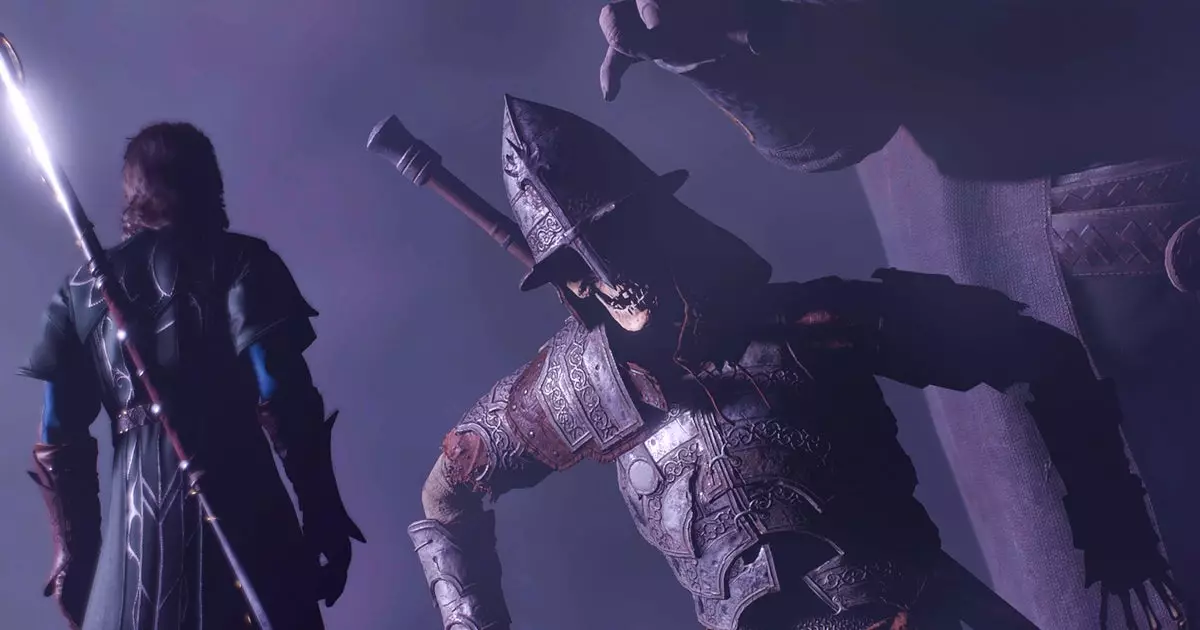In recent weeks, the gaming community was treated to a tantalizing glimpse of what could have been—a Dungeons & Dragons RPG from Hidden Path Entertainment, the co-developers behind Counter-Strike: Global Offensive. The emergence of unpolished footage and concept art has given us a narrative littered with potential, confusion, and ultimately a feeling of melancholy for what could have been a stellar addition to the world of RPGs. This narrative highlights the pitfalls of development in an industry where even the most promising projects can tumble into obscurity.
The Rise and Fall of Project Dante
Initially, Project Dante was cloaked in secrecy but was soon rumored to have faced cancellation amid a wave of restructures at Wizards of the Coast in 2023. This uncertainty was fueled by contradictory statements from Hidden Path, adding layers to an already convoluted story. The creative director, Michael Austin, later hinted at a “pause” rather than a cancellation, implying that the dream of Project Dante might not be completely extinguished yet. However, the reality is stark; 44 talented developers lost their livelihoods during this tumultuous period, underscoring the personal stakes entwined with corporate decisions.
The combination of pressure to deliver in an era dominated by high-quality, dynamic RPGs and internal shifts seems to have taken its toll. One can only speculate about the conversations held behind closed doors: Was there ever a point where the team felt they could reclaim their vision? Or were they caught in an exhausting cycle of reworking concepts in a bid to catch up with industry giants like Larian Studios, creators of the acclaimed Baldur’s Gate series?
The Narrative and Aesthetic Appeals
The recently released footage, albeit in a raw form, offers a taste of what players might have expected from Project Dante. Featuring a trio of adventurers battling bandits and delving into environmental puzzles, the gameplay evokes a familiar nod to other fantasy epic players. The design choices here appear both exciting and derivative, echoing beloved titles while still presenting potentially unique mechanics or narratives worth exploring.
One standout moment comes in the form of a puzzling segment where players must figure out how to get magical water flowing within an ancient temple. Although the challenge offered here isn’t groundbreaking, the idea of intertwining combat with environment interaction is a theme that, if refined, could have contributed to an ambitious gameplay experience. The hint of charming character interactions—like Kavar’s forgettable yet amusing quip—showcases a layer of humor that RPG aficionados might have cherished, even if it skews toward the cliché.
Art-wise, the concept design strikes a mild chord of nostalgia. It hints at traditional fantasy elements while also teasing potential for creative originality. The appearance of a flying cat, lovingly referred to as a Tressym, not only demonstrates a willingness to embrace whimsy but also leaves many wondering what other adventures and kooky creatures may have populated the world of Project Dante.
Reflections on Potential and Timing
While the industry has been inundated with exceptional titles, some still argue that Boundless Creativity is often stifled by the relentless pressure of deadlines and commercial feasibility. The paradox lies in the anticipation of fans clamoring for new experiences versus the harsh realities of development timelines that can lead to projects being shelved or abandoned. After all, which narratives and mechanics remain unexplored when teams prioritize trends and profitability over passion projects?
Critically, the pictures from Project Dante reveal an intriguing window into the creative processes and decision-making within game development. It serves as a clarion call to both developers and gamers: there is immense value in nurturing innovative ideas and taking risks, even if it means facing the heart-wrenching possibility of abandonment. The contrast between the desires of developers and the realities of market demands is stark, reminding us that gaming is both an art and a business—where sometimes the most compelling creations are never fully realized.
In this light, the story of Project Dante is not solely about a canceled title. It symbolizes the broader narrative of ambition, creativity, and loss within an industry that teeters on the brink of artistic expression and financial viability. Perhaps it’s a gentle reminder that every placeholder for development distills the essence of hope intermingled with dashed expectations.

